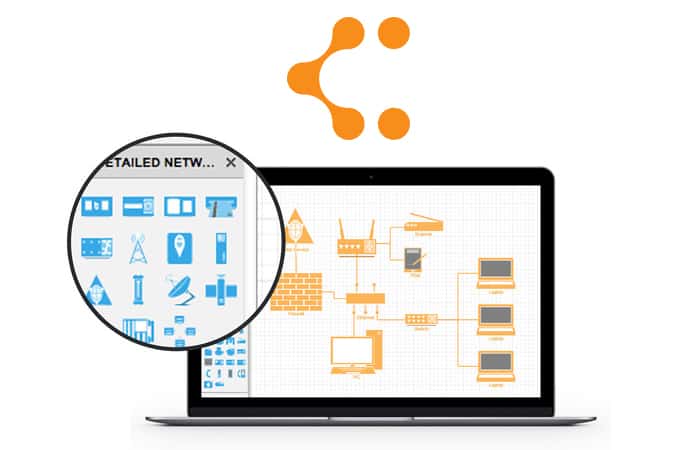Lucidchart Free Trial
What is an Enhanced ER Diagram? Enhanced entity-relationship models, also known as extended entity-relationship models, are advanced database diagrams very similar to. Enhanced ERDs are high-level models that represent the requirements and complexities of complex databases. In addition to the same concepts that ordinary ER diagrams encompass, EERDs include: • Subtypes and supertypes (sometimes known as subclasses and superclasses) • Specialization and generalization • Category or union type • Attribute and relationship inheritance Diagramming is quick and easy with Lucidchart. Start a free trial today to start creating and collaborating.
Sign up free Enhanced ERD Definitions and Examples The definitions of concepts listed below are unique to enhanced entity-relationship diagrams and can help to understand how the modeling concepts of EERDs differ from those of ERDs. If you need to brush up on the basic concepts of ERDs, check out our, including this guide to the basic. As soon as you fully understand ERD structure, you’re ready to learn how to create enhanced ER diagrams.
Supertypes and Subtypes • Supertype - an entity type that relates to one or more subtypes. • Subtype - a subgroup of entities with unique attributes. • Inheritance - the concept that subtype entities inherit the values of all supertype attributes. Note: subtype instances are also classified as supertype instances. Generalization & Specialization • Generalization - the process of defining a general entity type from a collection of specialized entity types. • Specialization - the opposite of generalization, since it defines subtypes of the supertype and determines the relationship between the two.

Constraints • Disjointness constraints - You will need to decide whether a supertype instance may simultaneously be a member of two or more subtypes. The disjoint rule forces subclasses to have disjoint sets of entities.
The overlap rule forces a subclass (also known as a supertype instance) to have overlapping sets of entities. • Completeness constraints - decide whether a supertype instance must also be a member of at least one subtype.
The total specialization rule demands that every entity in the superclass belong to some subclass. Just as with a regular ERD, total specialization is symbolized with a double line connection between entities. The partial specialization rule allows an entity to not belong to any of the subclasses.
It is represented with a single line connection. Subtype Discriminators A subtype discriminator is an attribute of the supertype that indicates an entity's subtype. The attribute's values are what determine the target subtype. • Disjoint subtypes - simple attributes that must have alternative values to indicate any possible subtypes. • Overlapping subtypes - composite attributes whose subparts pertain to various subtypes. Each subpart has a Boolean value that indicates whether or not the instance belongs to the associated subtype.
Oct 26, 2017 * After a 7-day free trial. Lucidchart converted me back to a free account for 3 days until they worked out their billing/payment issue with Apple. Lucidchart is your solution for visual communication and cross-platform collaboration. Create professional flowcharts, process maps, UML models, org charts, and ER.

Creating an Effective EERD A well-designed EERD will help you build storage systems that are long-lasting and useful. Consider the following when evaluating your entity relationship diagram to be sure that you’re modeling a system design that will meet the requirements of your business: • Stability: Will the diagram support changing business needs? • Breadth: Can all of the data that we need to store be organized in the model? • Flexibility: Can data in this model be re-organized to support new information requirements?
• Efficiency: Is this model the simplest solution possible? Is the data modeled with the appropriate symbols?
Family Interaction A Multigenerational Developmental Perspective Fifth Edition. • Accessibility: Can both creators and end users easily understand your EERD? • Conformity: Will the model integrate easily with your existing database structure?
Visio Network Diagram Shapes Lucidchart provides you with both vendor-specific and vendor-neutral network diagram shapes. Whether it’s a Cisco router, an Amazon Web Services bucket, or more abstract parts of the network like the cloud, you can find the shape you need in our Networking libraries. When you have a Lucidchart document open, click “+ Shapes” in the lower-left corner. This will bring you to the dialog to manage shapes. From here, you can check boxes for Cisco, AWS, and even tech-centric clipart. If you’re migrating from Visio, you might be bringing your own Visio stencils with you. Lucidchart can import these files!
From the same library manager dialog, click Visio Stencil. From here you can add your own Visio shapes.
For more details, read our in-depth tutorial on. This example network diagram demonstrates a simple network map that shows off our AWS shapes. To export as a VDX diagram, for a free premium trial. Diagramming is quick and easy with Lucidchart. Start a free trial today to start creating and collaborating. Sign up free Network Diagram Example to edit the AWS Network Diagram template. More Network Diagram Examples We have even more network diagram templates: click on the images below to open the diagram type you’re looking for.
Remember to enable the shape libraries to access hundreds of icons. Select a template to see more.
Network Diagram Flat UI to edit the Flat UI Network Diagram template. Mobile Theme Maker Software Download For Pc more. Visio Network Diagram to edit the Visio Network Diagram template.
Server Rack Diagram to edit the Server Rack Network Diagram template.